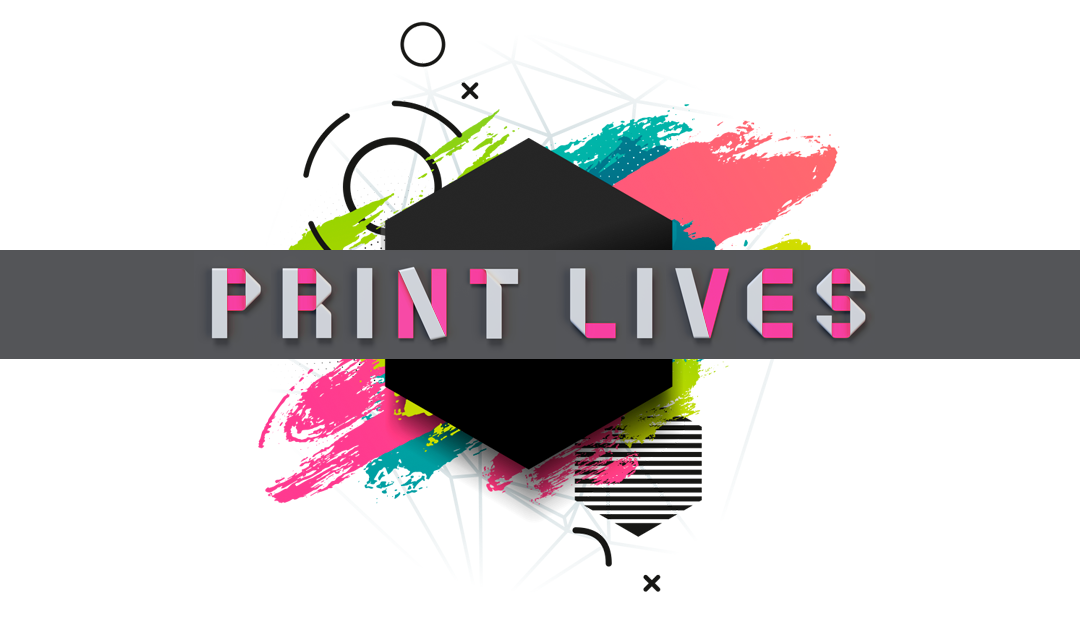Print will always be with us.
Despite all the assertions that print is “out” in the face of digital media, its decreasing frequency is not a matter of a supposed decline but rather of re-positioning. There is a place for print. Its place simply has changed. At the same time that print’s percentage in the media mix is shrinking, it is growing in value.
Print Has Impact
In this digitized world, print now stands out. It engages the senses in ways that digital cannot. A printed piece of communication has texture, feel, presence, novelty. Amidst the bombardment of digital, print slows us down. All digital media has the same feel: flat, projected, featureless in the hands, confined to the current device screen size, distant. Print media, studies have found, carries with it a greater sense of credibility than digital.
Print has advanced in major directions with respect to its technology, providing amazing new capabilities such as variable data, personalization, and new physical effects with substrates, die-and laser-cutting, coatings, and finishing — creating breathtaking special effects not possible except through the direct experience of an object that is held in the hands. And in this arena I also include imprinted items and promotional merchandise which incorporates print technologies. I challenge anyone to digitally produce effectively the tangible, tactile experiences of foil stamping, embossing, custom paper, laser-cut, or other innovative and 3D objects and elements — let alone the reveal, interest, and excitement of an innovative fold.
Print Is Personal
Unlike a digital device, the experience of a printed piece is inherently more personal. It doesn’t require batteries, a WiFi connection, or a log-in. Studies find that print is superior not only for conveying a sense of value, but also for those circumstances in which slightly more involved information must be communicated. The print medium provides “keepers” — fun, interesting, and value-projecting physical objects that recipients can use, reuse, or place on a desk, shelf, or dresser. These objects feel like gifts and can be personalized. People experiencing print find that they are more relaxed, receptive, and less easily distracted / “rushed” than they are when viewing the same information on a digital device.
Print Is Effective
Studies have found that advertising appearing in print seems to get more attention than the same image or message when viewed on a device screen. Perhaps this is because we’ve grown so accustomed to rapidly dismissing objects on a screen, while the elements on a printed page can be reviewed at a pace which feels more like our own. Print is considered, not clicked. Studies have also found that the majority (92%) of college students still prefer printed textbooks to online versions. Surely part of the reason for this is the ability to jot notes in the margins, flip to a page, or highlight at will without having to know Acrobat’s tools or screen shortcuts.
Print Stands Alone
Bottom line, there is nothing out there quite like print. Print occupies its own space — literally. It can be novel, fun, impressive, and engaging in ways that the now same old click-through cannot. Print can drive traffic to the web, and vice-versa (we’ve all seen offers of printed packages, gifts, or giveaways sent out in response to an online sign-up).
Here are some recent statistics about the power of print —
- 73% of American consumers say they prefer being contacted by brands via direct mail because they can read it whenever they want.
- 58% of the mail American households receive is marketing mail.
- 59% of US respondents say they enjoy getting mail from brands about new products.
- 60% of catalog recipients visit the website of the company that mailed them the catalog.
- Up to 90% of direct mail gets opened, compared to only 20-30% of emails.
- Prospects are 15% more likely to respond to an oversized mail piece if they have never done business with you.
- 68% of marketing respondents said combining digital and direct mail increased website visits.
- 60% of marketing respondents said combining digital and direct mail increased ROI.
A recent report issued by major marketing resources Demand Metric and Marcom Central included the results of a survey asking sales teams which marketing content assets they most needed. The primary focus of the report was on marketing content consistency — essentially, brand asset consistency — a marketing principle that Miele-Fleury Graphics both provides and advocates.
The survey asked sales teams to list their most-desired print-based materials. These included —
- Advertisements
- Training Material
- Direct Mail Pieces
- Catalogs
- Marketing Folders
- Display Banners
Bottom line — depending on the message (or the blend of messages) your business needs to communicate, print can form a valuable, key element in the messaging process and in the establishment and sustenance of a brand. Print is no longer “common” and has beautiful possibilities when used to its own special advantage.

